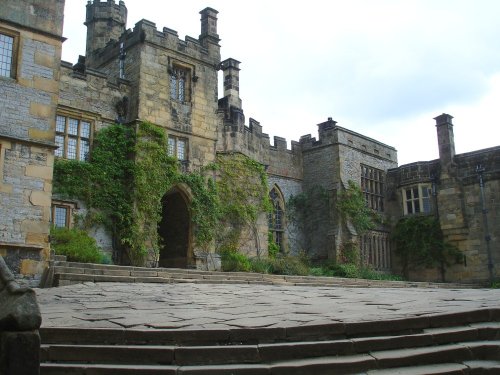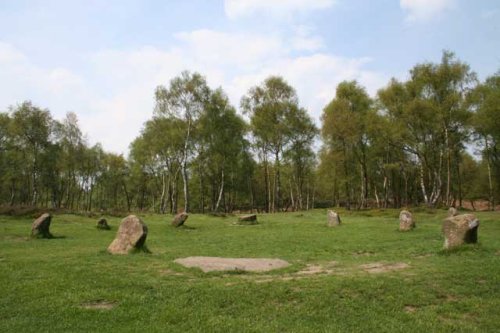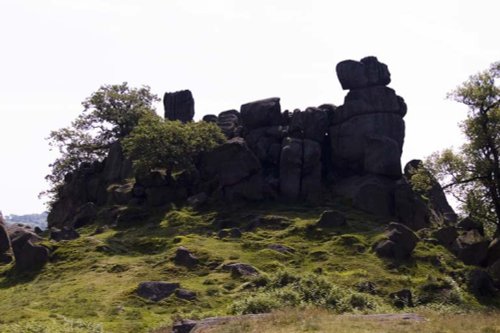Pictures of Bakewell
About Bakewell
Bakewell is the largest town in the Peak District National Park. It is an old town full of glowing stone houses and buildings that lend an air of ambience and overall warmth.
At the time of the Doomsday Book, the entry for Bakewell read "Badequella" meaning Bath-well, so we are assured the town has a long history, indeed some of the buildings here date from as far back as the 16th century.
Most people in the country have heard of Bakewell, quite possibly through the famous tasty Bakewell Tart. This is believed to have been first introduced by a cook at The Rutland Arms, a dignified building from 1804. The cook made a mistake with her ingredients, but this was discovered too late, the dish was served to the guests who happily confirmed it to be "delicious - keep on making it" thus the Bakewell Tart came into being, and has been made since this event took place in 1859!
Of the many interesting streets in the town is King Street, where you can find the former 18th century Town Hall. This lovely building has had a chequered history, it was used as a hospital for the poor, and a courthouse.
Mills form part of Bakewell's heritage, in 1777 Richard Arkwright opened a mill in the town, this brought more employement for the townsfolk and a much needed flurry of prosperity. The Victoria Corn Mill built late in the 18th century, belonged to the Duke of Rutland. This mill can be found just off the Bakewell Road, corn continued to be ground here until shortly after the 2nd World War.
Bakewell's beautiful parish church is a must for every visitor. All Saints was founded over a thousand years ago, and you can still see parts left from the original Norman building. It was altered during the 13th century, and later by the Victorians. It is a large church with a lot of spectacular church treasures including the table-tomb of Sir George Vernon who died in 1567. Sir George was often called "The King of the Peak" because of his lavish lifestyle and extravagant entertaining at his home, the near by Haddon Hall.
Another tomb in the church contains Sir George Manners, on this is a statue of his wife Lady Grace, who founded the original Lady Manners School in 1636. The slender spire topping the church is a noted landmark, and beneath in the surrounding churchyard visitors can see tombs and gravestones from several centuries.
The Old House, behind the church dates from 1534, this is a beautiful medieval building and it is now open as a museum of local history. Another interesting building is Bagshaw Hall, built by a wealthy lawyer in the 17th century and the Red Tudor House. The square named after mill giant Arkwright still contains some of the houses built for his mill workers.
Many visitors are drawn here by the wells, these have been an important feature of the town for centuries. Most of Bakewell's wells have been filled in but at the recreation ground you can see the Holywell, and Bath Well is in Bath Street.
Bakewell still clings to past traditions, the first market in the town was noted around 1300, and today Bakewell's market draws visitors from miles around. The annual well dressing ceremony is another well attended lively event, and a show is held every August. There is also an annual arts festival and for those wishing to learn at first hand some of the towns history there is an informative town trail.
One of the town's loveliest features is the graceful 5 arched bridge spanning the waters of the River Wye, this was originally built in the 13th century but widened in the 1800's. The banks of the Wye are a pleasant place to tarry for a while and enjoy a few moments of relaxation watching the colourful boats and rich river wildlife.
The town has a good range of accommodation, plenty of shops and several inns of note, these include the Queens Arms and the Peacock Inn both located close to the river, while in Bridge Street you will find the Castle Inn, the Wheatsheaf and Bridge House. In the town square is the Red Lion and the afore-mentioned Rutland Arms. Interestingly Jane Austen was a visitor to the Rutland Arms, she came here around 1811, later she used the inn as a setting for two of the love scenes in Pride and Prejudice, and called the town Lambton.
Bakewell is central for all the pleasures of the Peak District National Park and the great historic houses of Chatsworth and Haddon Hall, both lie within easy driving distance.






